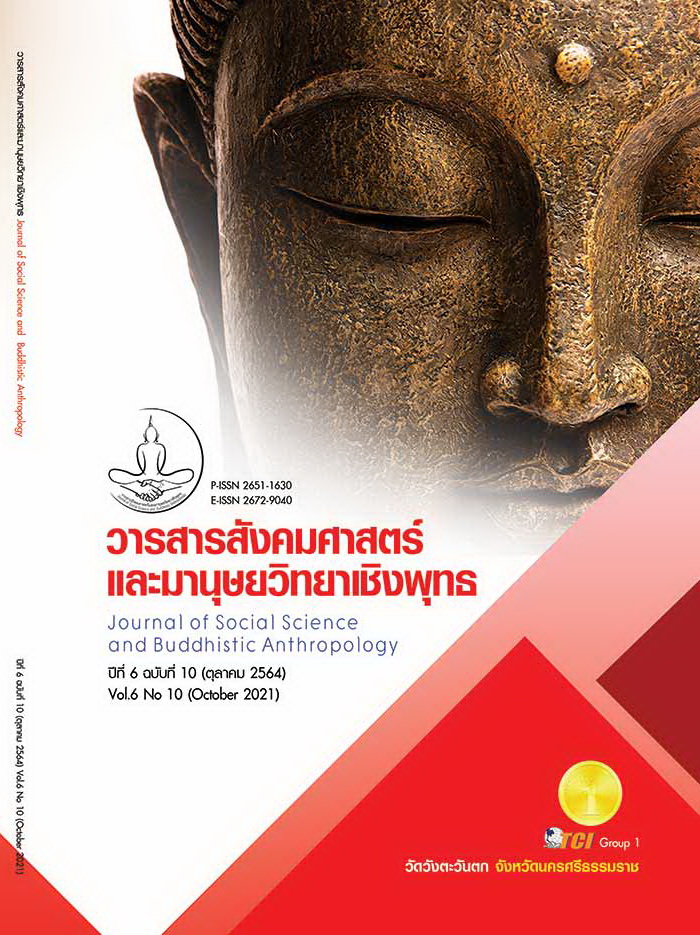AESTHETICALLY POTENTIAL DEVELOPMENT OF DISCARDED CORN HUSK TO GARMENT UNDER THE CREATIVE ECONOMY
Keywords:
Aesthetic, Corn Husk, Garment, New Material, Creative EconomyAbstract
This article's objective is to create the essential knowledge for the creative potential development of discarded corn husk. For this wasted material, applying the aesthetic will create market value. Using qualitative research methods to set the significance of the study. The scope of the study was set by data collecting at Nan province and Talard Thai Food Service. These locations have a large amount of discarded corn husk. It has become environmental pollution for a nearby residential area because of mismanagement in waste incineration. The experiment on these collected samples of corn husk presented a result that shows the high potential of this material. 1) Discarded corn husk presents a high aesthetics potential for garment design that utilizing both art and Sciences; it presents potentially cotton substitute material. With this finding, it can provide an alternative material that has a unique appearance and has a market value. 2) The garment design that can create environmental awareness and lead to the next generation industry under the creative economy policy. The study of Primary Data came from collecting data on the locations of the corn farms in Nan Province and Talaad Thai market in Pathum Thani Province. Qualitative Data Analysis came from the Unique case of corn husk's unique characters such as corn husk with the burn mark pattern on its surface. The descriptive analysis describes the 3 potential aspects of corn husk. 1) Shape and Form 2Ds and 3Ds; 2) Mass; 3) Textile and Surface. The research result shows a promising potential new material from the corn husk in 3 aspects such as 2Ds, 2 & a half Ds, and 3Ds. The aesthetic result shows the repetition of new material creates a unique artistic design that suitable for forming a garment design.
References
กระทรวงเกษตรและสหกรณ์. (2560). ยุทธศาสตร์เกษตรและสหกรณ์ระยะ 20 ปี พ.ศ. 2560-2579. ใน รายงานแผนยุทธศาสตร์เกษตร. กระทรวงเกษตรและสหกรณ์.
กำจร สุนพงษ์ศรี. (2556). สุนทรียศาสตร์. (พิมพ์ครั้งที่2). กรุงเทพมหานคร: สำนักพิมพ์แห่งจุฬาลงกรณ์มหาวิทยาลัย.
ฉลอง สุนทรนนท์. (2558). สุนทรียศาสตร์และทัศนศิลป์. (พิมพ์ครั้งที่1). กรุงเทพมหานคร: โรงพิมพ์ มิตรสัมพันธ์กราฟฟิค จำกัด.
ธีรยุทธ คล้ำชื่น. (7 พฤษภาคม 2561). บทสัมภาษณ์: การเจริญเติบโตของพืชไร่ประเภทข้าวโพด. (นางสาวณิรชญา จังติยานนท์, ผู้สัมภาษณ์)
ไพโรจน์ ชมุนี. (2559). สุนทรียศาสตร์ตะวันตก. นครปฐม: โรงพิมพ์ แปลน พริ้นท์ติ้ง จำกัด.
มาเรียม นิลพันธ์. (2558). วิธีวิจัยทางการศึกษา. (พิมพ์ครั้งที่9). นครปฐม: โรงพิมพ์มหาวิทยาลัยศิลปากร.
ศูนย์สร้างสรรค์งานออกแบบ. (2563). เจาะเทรนด์โลก 2021: Reform this moment. . (พิมพ์ครั้งที่1). กรุงเทพมหานคร: สำนักงานส่งเสริมเศรษฐกิจสร้างสรรค์(องค์กรมหาชน).
สถาบันพัฒนาอุตสาหกรรมสิ่งทอ. (2560). องค์ความรู้ “Circular Fashion”. เรียกใช้เมื่อ 1 กุมภาพันธ์ 2564 จาก https://www.textiles.org
สำนักงานเศรษฐกิจการเกษตร. (2562). สถิติการใช้ที่ดินสำหรับพื้นที่ไร่ในประเทศไทย. ใน รายงานผลสถิติ. กระทรวงเกษตรและสหกรณ์.
Dezeen. (2020). The Department of Seawood Installation and workshops Limited Awards. Sustainable Design of the Year 2020. Retrieved January 28 , 2021, from https://www.Dezeen.com/en/
Irisvanherpen. (2021). About Couture Collection. Retrieved April 16 , 2021, from from https://www. Irisvanherpen.com/new/
Miyake, I. (2021). Concept Design for Collection. Retrieved April 6 , 2021, from https://www.isseymiyake.com/en/
Thecnology is our next nature. (2020). Synthetic Biology/2020. Retrieved April 16, 2021, from https://www nextnature.net/story/2020/interview-zuzanna-lee-2/








